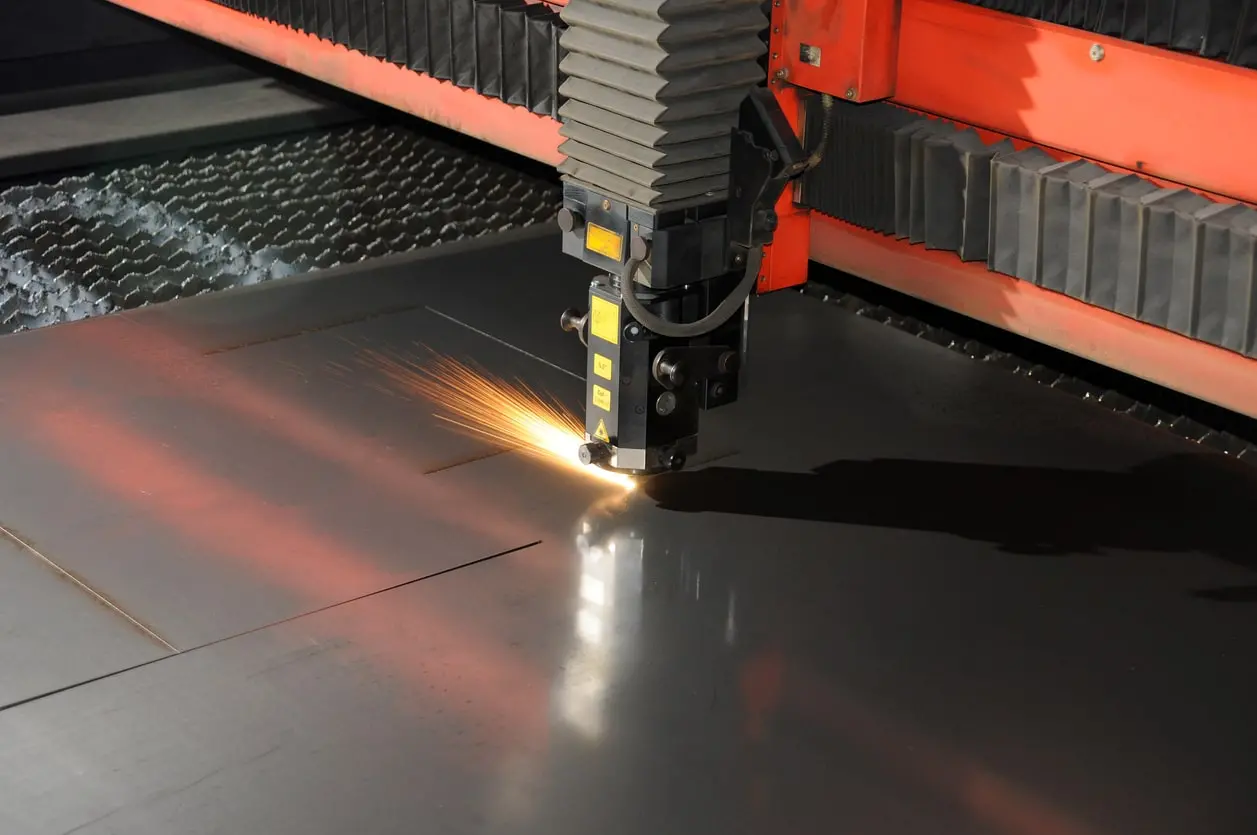Laser technology has revolutionized numerous industries, ranging from medicine and manufacturing to communication and entertainment. The ability to generate and control highly focused beams of light has opened up a world of possibilities, enabling precise measurements, intricate surgeries, high-speed data transmission, and much more.
What is a Laser?
A laser is a device that emits coherent and concentrated light through a process called stimulated emission. Unlike ordinary light sources, lasers emit light in a narrow and well-defined beam, allowing for highly precise applications. The stimulated emission process results in a highly concentrated, monochromatic, and coherent beam of light, making lasers irreplaceable across various fields for applications such as cutting, welding, medical procedures, communication, and scientific research.
Components of a Laser
At its core, a laser consists of three essential components: a gain medium, an energy source, and an optical cavity.
- Gain Medium: This is a crucial element of a laser, and it can exist in different forms. It could be a solid, like a crystal or glass; a liquid, such as dye; or a gas, like helium or carbon dioxide. The choice of gain medium depends on the application and desired characteristics of the laser.
- Energy Source: The gain medium needs to be energized to initiate the laser process. This energy source could be in the form of an electrical current, a flash lamp, or even another laser. The energy input excites the atoms or molecules within the gain medium to higher energy states.
- Optical Cavity: The gain medium is placed between two mirrors that form the optical cavity. This reflects and amplifies these photons, allowing them to bounce back and forth through the gain medium, triggering a cascade of stimulated emissions.
Types of Lasers
There are various types of lasers, each suited for specific applications. Some common types include:
- Solid-State Lasers: These lasers use a solid crystal or glass as the gain medium. They are known for their high energy output and are widely used in scientific research, material processing, and medical procedures.
- Gas Lasers: Gas lasers utilize a gas mixture as the gain medium, with helium-neon (HeNe) lasers being one of the most well-known examples. They are often used in barcode scanners, laser printers, and holography.
- Semiconductor Lasers: Also known as diode lasers, semiconductor lasers are compact and efficient, making them ideal for telecommunications, optical storage, and laser pointers.
- Fiber Lasers: Fiber lasers use a doped optical fiber as the gain medium. They are highly versatile and find applications in telecommunications, laser cutting, and industrial manufacturing. Boss Laser offers several options for fiber laser cutting and engraving machines. Contact us today to see which machine works best for you.

Fundamentals of Laser Technology
The unique properties of laser light, such as coherence and monochromaticity, distinguish it from ordinary light sources. Coherence refers to the uniform phase and direction of the emitted photons, resulting in a tight, focused beam that maintains its integrity over long distances. Monochromaticity denotes the laser’s ability to emit light of a specific wavelength, providing precision tailored to the requirements of various applications. These fundamental characteristics empower lasers to excel in tasks demanding precision, ranging from scientific research and industrial applications to medical procedures and cutting-edge technological innovations. Understanding the intricacies of population inversion and the distinct nature of laser light is crucial for appreciating the transformative impact of laser technology across a multitude of fields.
Stimulated Emission Process
The process of stimulated emission is pivotal to laser operation. When a photon collides with an excited atom or molecule within the gain medium, it triggers the release of additional photons that are identical in wavelength, phase, and direction to the incident photon. This results in a chain reaction, rapidly amplifying the intensity of the light within the optical cavity. The mirrors at either end of the cavity allow the coherent light to be emitted as a highly focused and collimated laser beam.
Applications Across Industries
The versatility of laser technology has led to its widespread adoption across diverse industries. In manufacturing, lasers are used for precision cutting, welding, and engraving. Medical applications range from surgical procedures to diagnostics, while in communication, lasers facilitate high-speed data transmission through fiber-optic networks. The entertainment industry utilizes lasers for light shows, displays, and holography. Understanding the fundamentals of laser technology unveils the immense potential for precision, efficiency, and innovation that lasers bring to various sectors, making them indispensable tools in the modern technological landscape.
Contact Boss Laser for Laser Techonology
Laser technology has transformed numerous industries, from medicine and manufacturing to communication and research. Its ability to generate coherent and focused light beams has enabled remarkable advancements, improving precision, efficiency, and innovation. As technology continues to evolve, lasers are poised to play an even more significant role in shaping the future of various fields, leading to breakthroughs in healthcare, computing, energy, and beyond. Discover the potential of laser technology with Boss Laser as we continue to innovate, push the boundaries, and unlock new possibilities.
